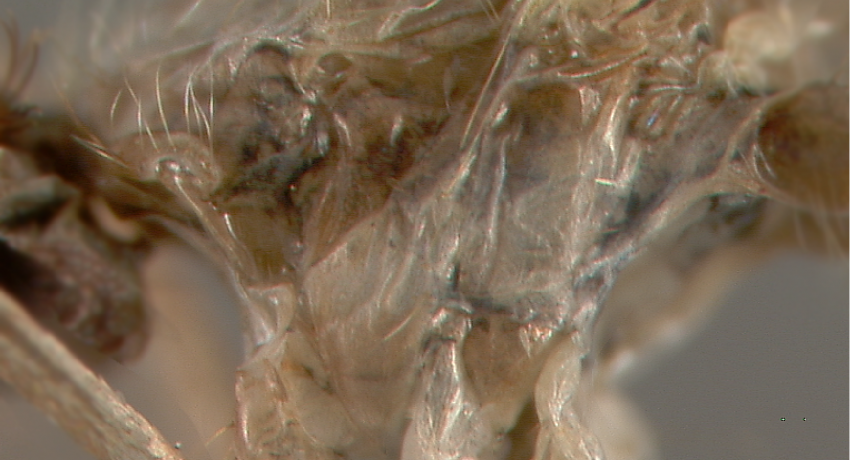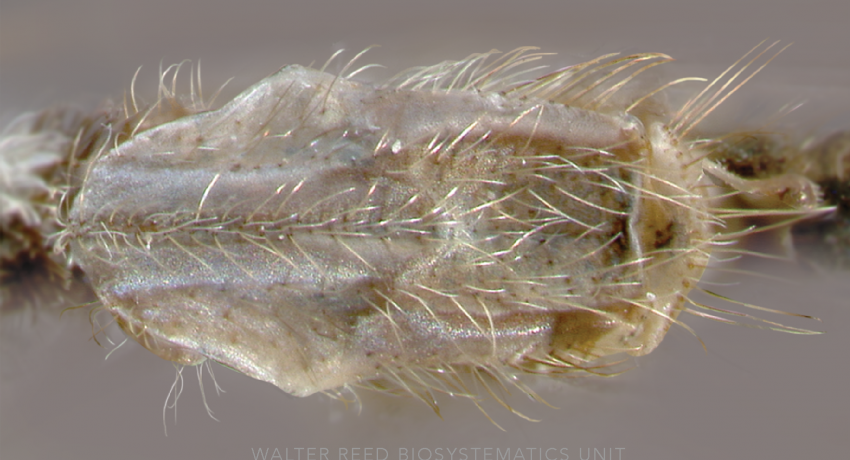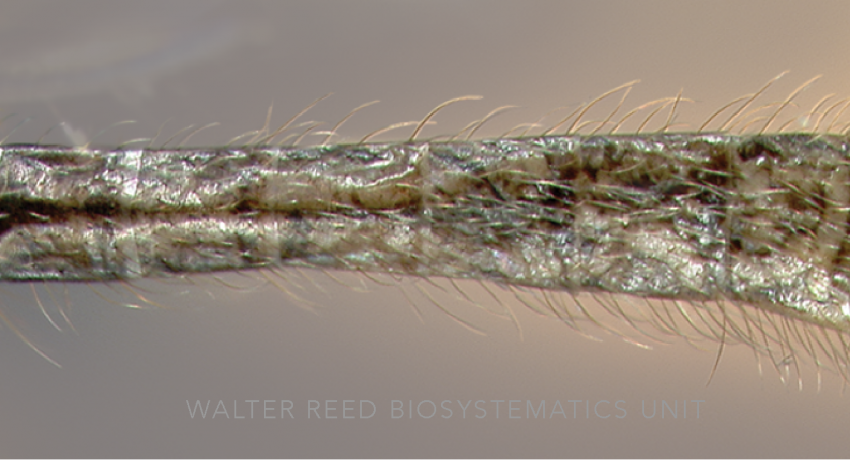AUSTRALASIAN REGION
Generic abbreviation: Bi.
Type species: Bironella gracilis Theobald (as genus, subg.). ICZN 1965 (Opinion 737; name validation).
Etymology: Lajos Biró (collector); biro- plus a diminutive suffix -ella (L).
Bironella species are restricted to the primary forests of Australasia, where they are rare. Their phylogenetic placement within Culicidae remains unresolved—it is either placed as a sister-taxa to Anopheles, or embedded within the genus Anopheles itself. The genus comprises eight species split into three subgenera—Bironella, Brugella and Neobironella. Bironella gracilis Theobald—the type species and most widely distributed species of the genus—and Bi. simmondsi Tenorio, which has only been reported from Queensland, Australia, comprise the subgenus Bironella. The subgenus Brugella includes Bi. hollandi Taylor (Bismarck Archipelago & Solomon Islands), Bi. obscura (New Guinea), and Bi. travestita (Molucas (Ceram) & New Guinea). The subgenus Neobironella comprises Bi. confusa Bonne-Wepster (New Guinea & Bismarck Archipelago), Bi. derooki Soesilo & van Slooten (New Guinea), and Bi. papuae (Swellengrebel & Swellengrebel de Graaf) (Molucas, New Guinea and northern Queensland, Australia).
DIAGNOSTIC CHARACTERS (Click photos to view; mouse over and click large photo to zoom in.)
ADULT (illustrated): Thorax: Posterior margin of scutellum evenly rounded, with evenly distributed setae. Wing: Veins M1+2 and M3+4 distinctly sinuate (wavy). Abdomen: Covered with setae, but nearly devoid of scales.
LARVA (not illustrated): Thorax: Seta 1-M and 3-T palmate; seta 4-P closer to 1–3-P than 5–7-P.
TAXONOMIC KEYS
Bonne-Webster & Swellengrebel 1953
Belkin 1962
Tenorio 1977
![]()
WRBU – Genera – Global – Larva
![]()
WRBU – Genera – Australasia – Adult
![]()
WRBU – Genera – Australasia – Larva
![]()
WRBU – Genera – Indomalaya – Adult
![]()
WRBU – Genera – Indomalaya – Larva
Exemplar DNA sequences
Bi. gracilis COI: AF417725
Bi. hollandi whole mitochondrial genomes: MF381612 & NC_037796
BIONOMICS
Immatures
Bironella immatures are most commonly found amongst floating vegetation and debris associated with heavily-shaded freshwater sites. Bironella (Bironella) gracilis and Bi. (Bir.) simmondsi are typically associated with deep-forest water bodies, such as swamps, pools and rivers, but the larvae of Bi. gracilis have also been harvested from flower bracts. Immature Bironella (Brugella) include large groundwaters—lagoons, stream margins, swamps and ground pools—animal wallows, flooded wheel ruts, and occasionally artificial containers. Bironella (Neobironella) confusa immatures have been collected in container habitats including a tree hole and discarded tin can, but more common habitats for Neobironella species are the margins of ponds and streams, stream pools, and rock pools.
Adults
Overall little is known on the adult bionomics of Bironella species. Bironella (Bru.) travestita and Bi. (Bir.) gracilis are anthropophilic, and the latter enters human dwellings to feed. Adults of Bi. (Bru.) obscura, Bi. (Bru.) travestita and Bi. (Nbi.) confusa have been collected in Malaise traps.
*Associated pathogens: This list reports bacteria, viruses, and parasites recovered from, or experimentally passed through this species, and does not imply field vector status.
IMPORTANT REFERENCES (full citations below)
Theobald 1905f: 69 (M*)
Edwards 1922d: 98 (generic status confirmed)
Christophers 1924a (as subg. of Anopheles)
Bonne-Webster & Swellengrebel 1953: 50 (M*, F*, L*; keys, bionomics, taxonomy)
Belkin 1962: 129 (M*, F*, P*, L*; keys, taxonomy, South Pacific)
Tenorio 1977 (M*, F*, P*, L*; keys, bionomics, distribution)
Lee et al. 1988 (F; key, taxonomy, bionomics, distribution)
Besansky & Fahey 1997 (molecular taxonomy)
Harbach & Kitching 1998 (phylogeny)
Foley et al. 1998 (molecular phylogeny)
Sallum et al. 2000 (phylogeny)
Krzywinski et al. 2001a (molecular phylogeny)
Krzywinski et al. 2001b (molecular phylogeny)
Sallum et al. 2002 (molecular phylogeny)
Harbach & Kitching 2005 (phylogenetic classification)
VALID SUBGENERA
Bironella Theobald [Bir.]
Brugella Edwards [Bru.]
Neobironella Tenorio [Nbi.]
CURRENT GENERIC SYNONYMS
None
CITED REFERENCES
Belkin, J.N. (1962). The mosquitoes of the South Pacific (Diptera, Culicidae) (Vols. 1 &2). Berkeley, California: University of California Press.
Besansky, N.J., & Fahey, G.T. (1997). Utility of the white gene in estimating phylogenetic relationships among mosquitoes (Diptera: Culicidae). Molecular Biology and Evolution, 14, 442–454.
Bonne-Wepster, J., & Swellengrebel, N.H. (1953). The anopheline mosquitoes of the Indo-Australian Region. Amsterdam: J. H. de Bussy.
Christophers, S.R. (1924a). Provisional list and reference catalogue of the Anophelini. Indian Medical Research Memoirs, 3, 1–105.
Edwards, F.W. (1922d). Mosquito notes. III. Bulletin of Entomological Research, 13, 75–102.
Foley, D.H., Bryan, J.H., Yeates, D., & Saul, A. (1998). Evolution and systematics of Anopheles: insights from a molecular phylogeny of Australasian mosquitoes. Molecular Phylogenetics and Evolution, 9(2), 262–275.
Harbach, R.E. & Kitching, I.J. (1998). Phylogeny and classification of the Culicidae (Diptera). Systematic Entomology, 23(4), 327–370.
Harbach, R.E., & Kitching, I.J. (2005). Reconsideration of anopheline mosquito phylogeny (Diptera: Culicidae: Anophelinae) based on morphological data. Systematics and biodiversity, 3(4), 345–374.
Krzywinski, J., Wilkerson, R.C., & Besansky, N J. (2001a). Evolution of mitochondrial and ribosomal gene sequences in Anophelinae (Diptera; Culicidae): implications for phylogeny reconstruction. Molecular Phylogenetics and Evolution, 18(3), 479–487.
Krzywinski, J., Wilkerson, R.C., & Besansky, N.J. (2001b). Toward understanding Anophelinae (Diptera: Culicidae) phylogeny: Insights from nuclear single-copy genes and weight of evidence. Systematic Biology, 50(4), 540–556.
Lee, D.J., Hicks, M.M., Griffiths, M., Debenham, M.L., Bryan, J.H., Russell, R.C., . . . Marks, E.N. (1988a). The Culicidae of the Australasian region. Volume 6. Commonwealth Department of Health, School of Public Health and Tropical Medicine Monograph Series, 2.
Lee, D.J., Hicks, M.M., Debenham, M.L., Griffiths, M., Bryan, J.H., & Marks, E.N. (1988b). The Culicidae of the Australasian region. Volume 9. Commonwealth Department of Health, School of Public Health and Tropical Medicine Monograph Series, 2.
Lee, D.J., Hicks, M.M., Debenham, M.L., Griffiths, M., Bryan, J.H., & Marks, E.N. (1988c). The Culicidae of the Australasian region. Volume 10. Commonwealth Department of Health, School of Public Health and Tropical Medicine Monograph Series, 2.
Sallum, M. A. M., Schultz, T. R., Foster, P. G., Aronstein, K., Wirtz, R. A., & Wilkerson, R. C. (2002). Phylogeny of Anophelinae (Diptera: Culicidae) based on nuclear ribosomal and mitochondrial DNA sequences. Systematic Entomology, 27(3), 361–382.
Sallum, M. A. M., Schultz, T., & Wilkerson, R. C. (2000). Phylogeny of Anophelinae (Diptera, Culicidae) based on morphological characters. Annals of the Entomological Society of America, 93(4), 745–775.
Tenorio, J. A. (1977). Revision of the genus Bironella (Diptera: Culicidae). Journal of Medical Entomology, 14(3), 317–361.
Theobald, F.V. (1905f). A catalogue of the Culicidae in the Hungarian National Museum with description of new genera and species. Annales Musei Nationalis Hungarici, 60–125.
CITE THIS PAGE
Walter Reed Biosystematics Unit (Year). Bironella genus page. Walter Reed Biosystematics Unit Website, http://wrbu.si.edu/vectorspecies/genera/bironella, accessed on [date (e.g. 03 February 2020) when you last viewed the site].






